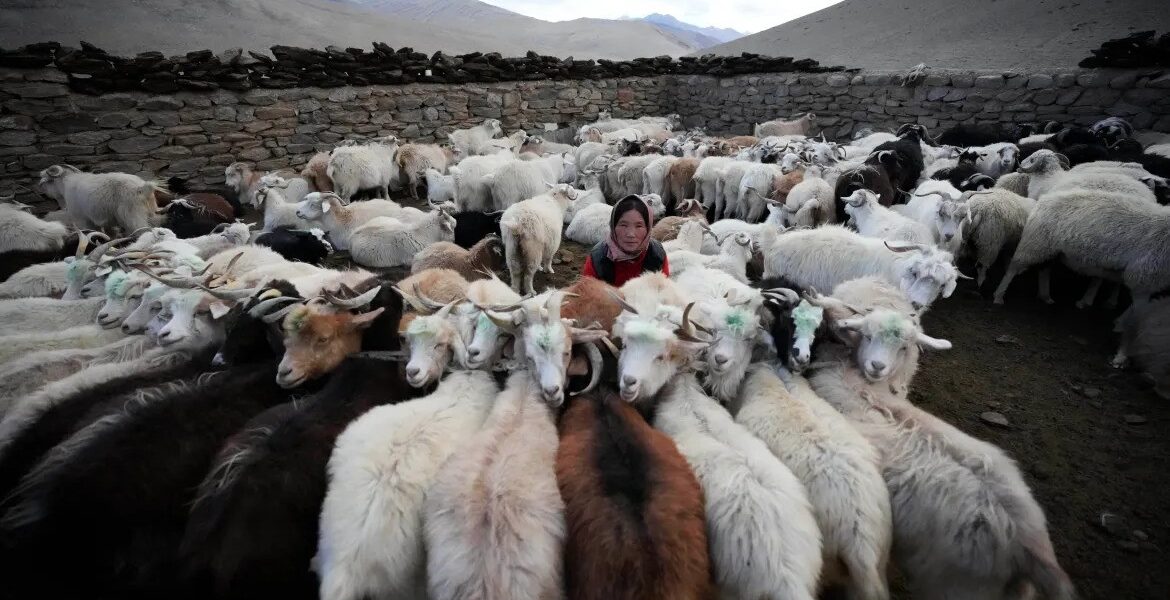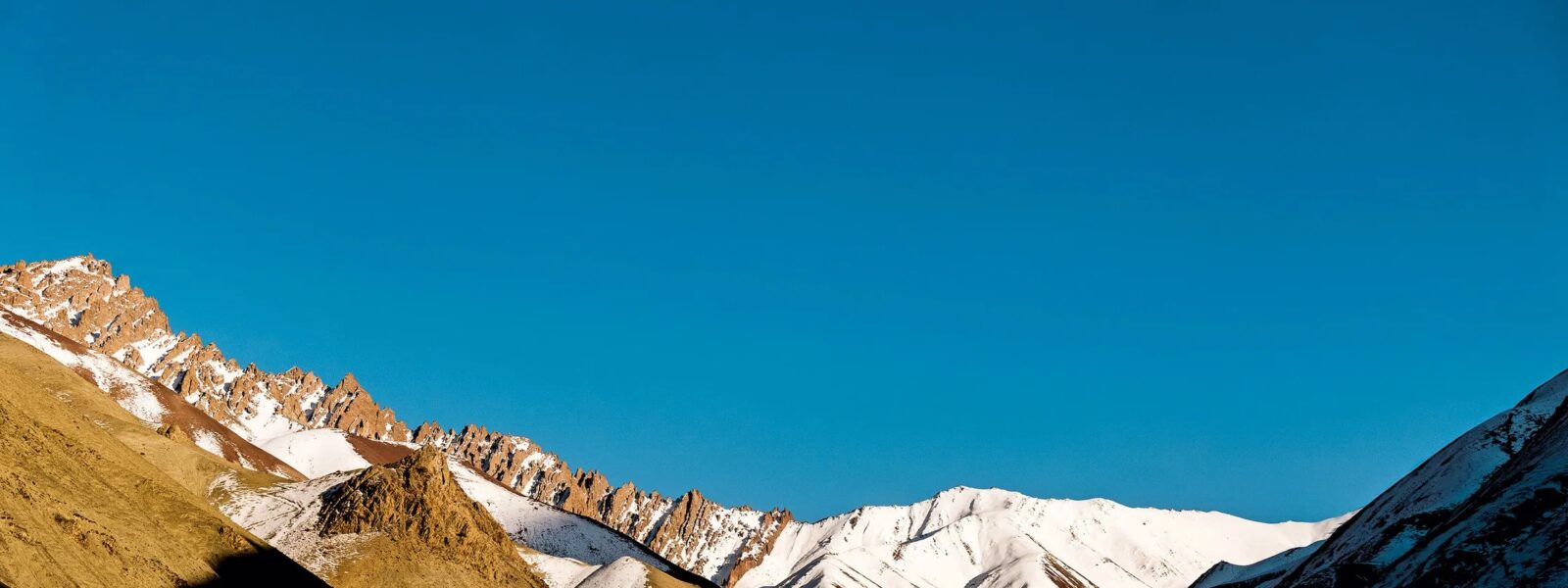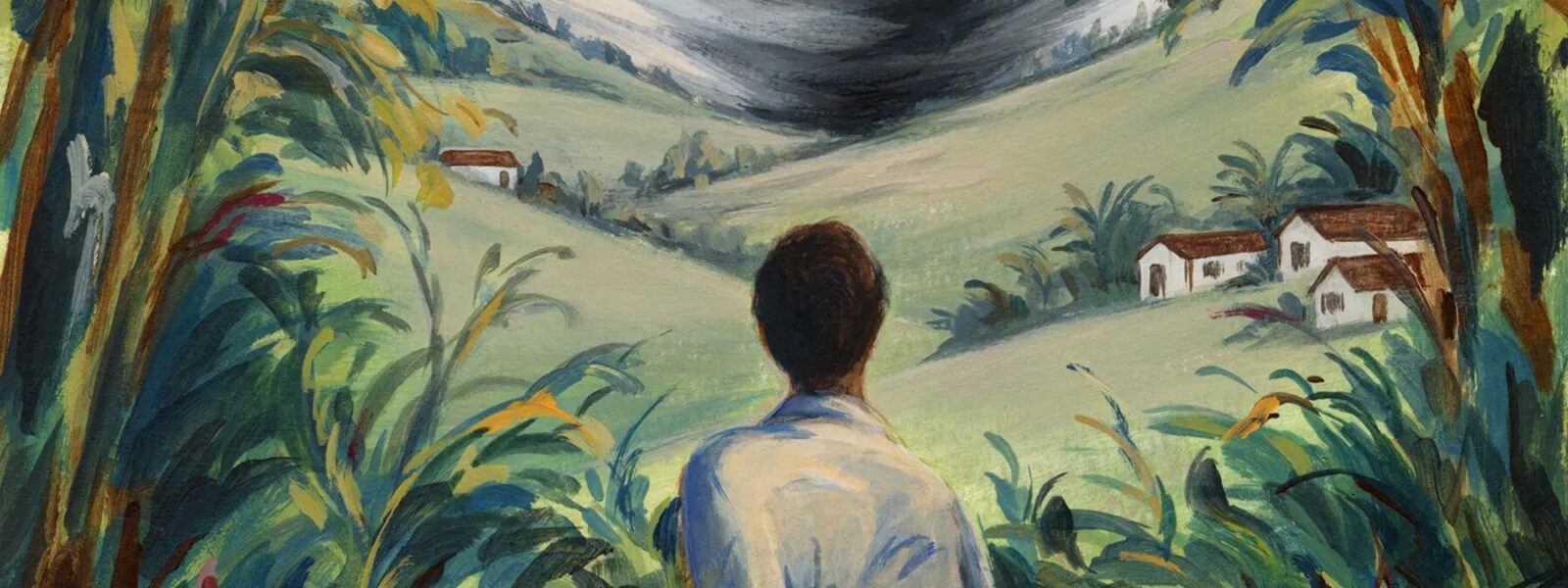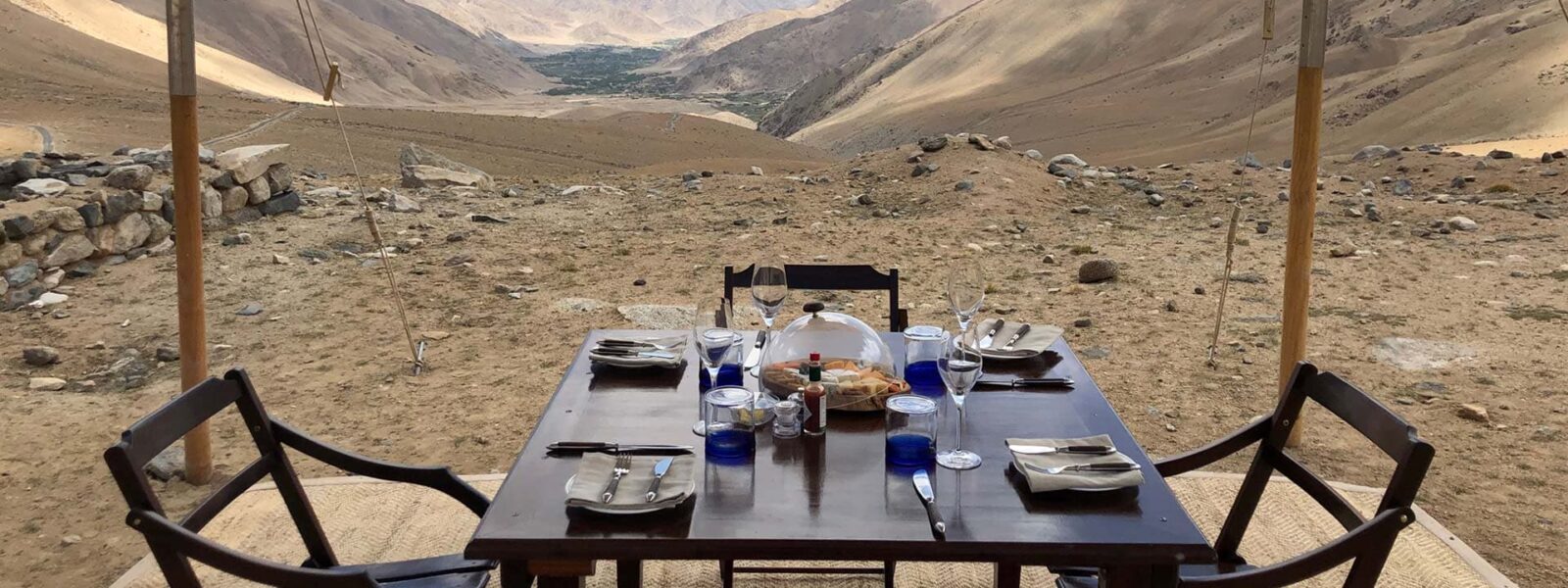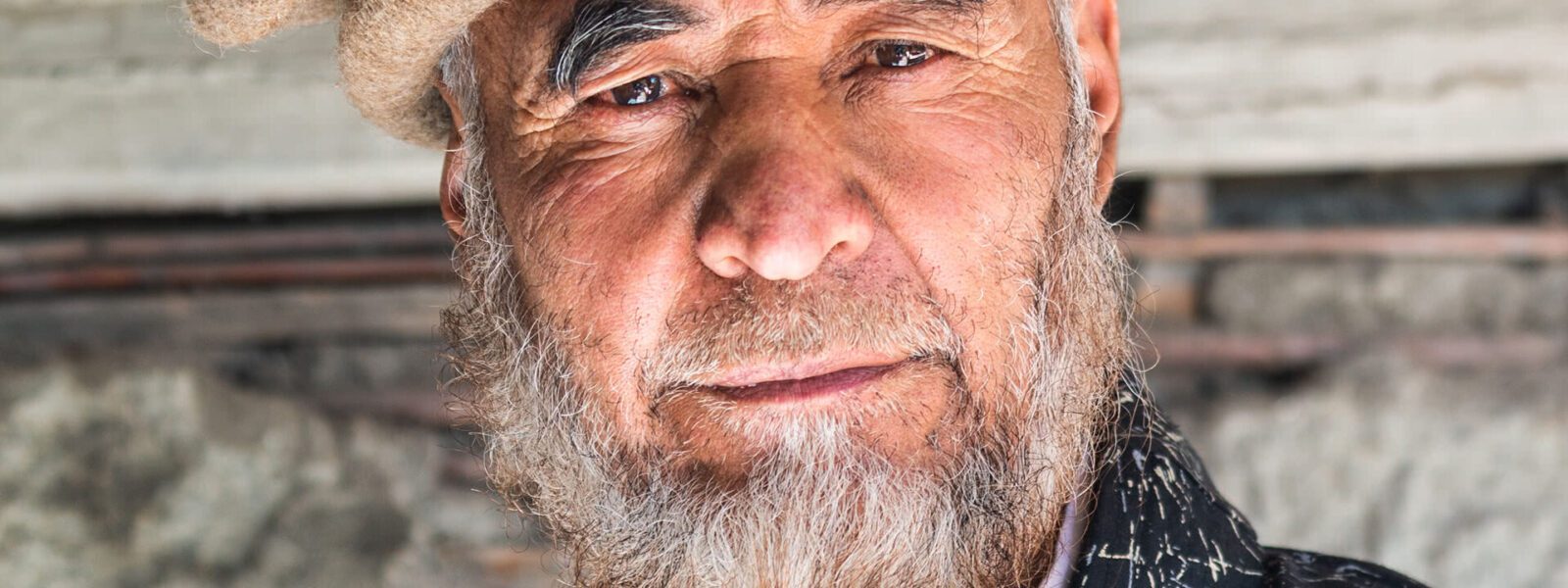Introduction to Takmachik Village: A Green Haven in the Himalayas
Tucked away in the folds of Ladakh’s rugged mountains, Takmachik Village is not just another scenic Himalayan hamlet—it is a living, breathing experiment in eco-tourism, organic living, and community resilience. Located approximately 80 kilometers from Leh, in the Leh district of Ladakh, this village has become a shining example of what sustainable tourism can look like when it is guided by the people who call the land home.
Perched at an altitude of around 3,100 meters, Takmachik is part of a larger movement to protect the fragile Himalayan ecosystem through responsible travel and environmental consciousness. But unlike many villages that have succumbed to the trappings of mass tourism, Takmachik has carved a different path. With its commitment to being entirely organic and its grassroots approach to hosting visitors, the village is fast becoming a destination for travelers seeking more than just a photo op.
The name “Takmachik” might not yet echo in the guidebooks the way some popular spots like Nubra or Pangong Lake do, but that’s exactly what makes it special. This village is off the beaten path, yet accessible; it is untouched, yet open to those who come with respect. Travelers who make their way here are rewarded not only with stunning landscapes—lush apricot orchards in summer, crisp golden hues in autumn—but also with a deep cultural experience rooted in authenticity and care.
What truly sets Takmachik apart is the sense of ownership and pride its residents take in their land and lifestyle. In 2011, the village made headlines for being declared Ladakh’s first organic village, an achievement driven not by external agencies, but by the villagers themselves. From waste segregation to solar lighting, every initiative in Takmachik stems from community willpower. Tourism here is not imposed—it is invited, designed to complement the rhythms of rural life rather than disrupt them.
Whether you’re a traveler interested in sustainable agriculture, a hiker in search of eco-friendly trekking routes, or simply someone who wants to experience life in harmony with nature, Takmachik welcomes you with quiet grace. This guide invites you to walk through its farms, stay in its warm homestays, taste its apricot jams, and listen to stories by the hearth. More than just a place, Takmachik is a reminder that progress and tradition can coexist—not in theory, but in daily life.
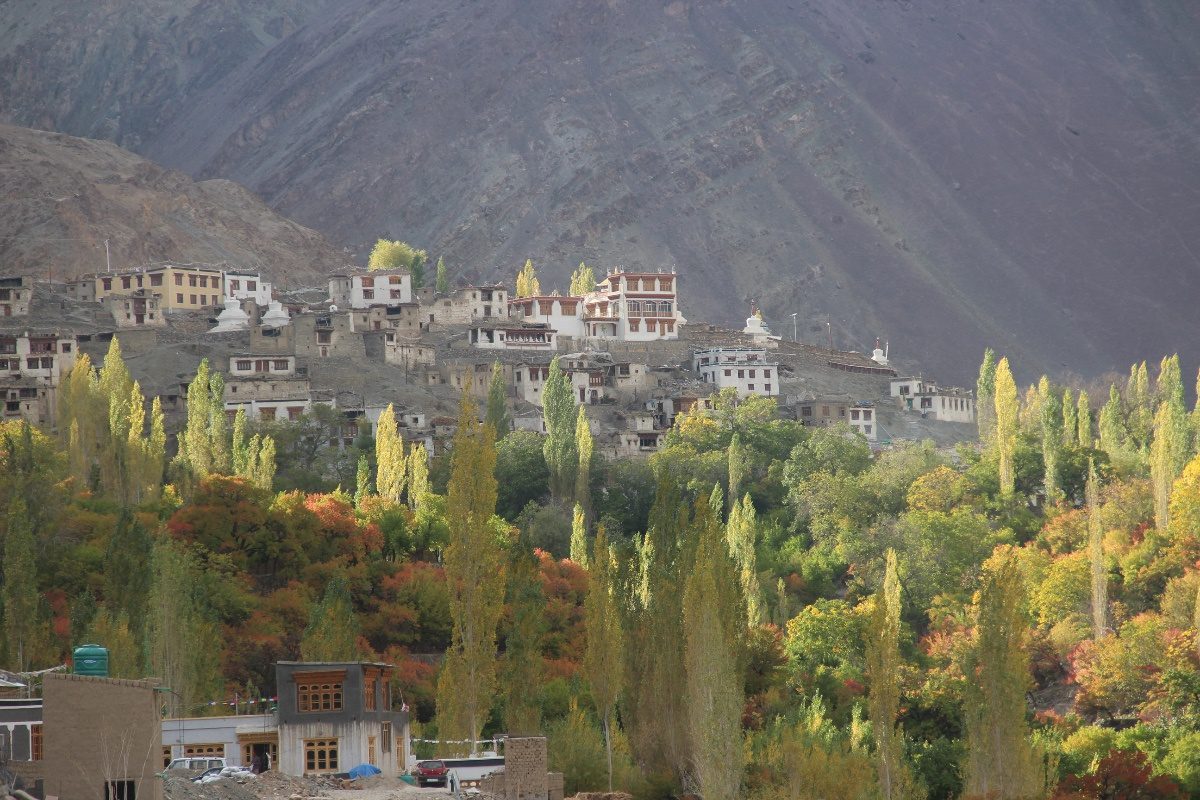
Eco-Tourism in Action: Sustainability Practices in Takmachik
In Takmachik, sustainability is not a buzzword. It is an everyday reality, woven into the way people build homes, grow food, and welcome travelers. The village’s eco-tourism model is driven by the simple idea that tourism should protect, not harm. Unlike in more commercial destinations, visitors here are asked not only to observe but to participate—with intention and care.
One of the most striking things about Takmachik is its commitment to a zero-waste lifestyle. Plastic is actively discouraged, and biodegradable alternatives are the norm. Each household participates in a waste segregation program that recycles, reuses, and composts what would otherwise be discarded. Organic farming, which relies on traditional Ladakhi methods, uses composted kitchen waste and cow dung instead of chemical fertilizers. Here, agriculture is not only a way to grow food—it’s a way to nurture the land for future generations.
Solar energy is another pillar of Takmachik’s sustainable infrastructure. Rooftop solar panels provide power for lighting and heating, reducing dependence on diesel generators or unreliable grid electricity. Villagers also use traditional water conservation systems to manage glacier melt, ensuring that every drop is put to good use. In a region where water scarcity is an ever-present concern, Takmachik’s approach is both ancient and innovative.
Visitors are gently introduced to these practices not through lectures, but by experiencing them firsthand. When you stay in a homestay, you’ll notice buckets for greywater reuse, compost toilets in some houses, and meal preparation using seasonal, homegrown ingredients. Conversations around the dining table often turn to topics like climate change, soil health, and resilient farming—not as abstract issues, but as lived realities.
Perhaps most inspiring of all is the role of the local youth. The Takmachik Youth Group plays a central role in the village’s eco-tourism strategy. These young men and women act as cultural ambassadors, trekking guides, waste management educators, and advocates for eco-awareness. Many of them speak English or Hindi fluently, making it easy for travelers to connect, learn, and share.
What makes Takmachik’s eco-tourism model so powerful is that it is not imposed from the outside. It is organic—in every sense of the word. It grows from the soil, from the stories of elders, from the laughter of children planting trees, and from the footsteps of mindful travelers who return home changed. Here, you are not just a tourist. You are a participant in a living experiment that proves rural communities can lead the way in green innovation.

Stay in Takmachik: Homestays & Village Life Experiences
Staying in Takmachik is a quiet revelation. Unlike hotels in Leh or guesthouses in more commercialized areas, here your accommodation is a home. A real Ladakhi home—often built with sun-dried mud bricks, whitewashed walls, and wooden beam ceilings. Each homestay in Takmachik is run by local families who open not only their doors but also their lives, their stories, and their kitchens.
These homestays are more than just a place to sleep. They are an invitation into the rhythm of Himalayan village life. You’ll wake to the sound of cows being milked in the courtyard and children heading off to school with laughter in the wind. Your morning tea will be served by a Ladakhi grandmother in traditional dress, often with a shy smile and homemade apricot jam on the side. Meals are simple but delicious: tsampa (roasted barley flour), chutagi (hand-rolled pasta soup), and fresh vegetables from the family’s organic field.
Every homestay adheres to the village’s eco-tourism code. This means water is used sparingly, waste is separated and composted, and plastic is avoided. You’ll likely eat by candlelight or solar lamp. There may be no television, but you’ll never feel bored—there’s a richness in watching the stars above the valley, in sharing a cup of butter tea, or simply observing life unfold slowly and purposefully.
Many travelers say the highlight of their stay in Takmachik is not the scenery—though the apricot orchards and dramatic rock cliffs are breathtaking—but the relationships. You’ll have time to sit with your host, ask questions about their land, their culture, and their hopes for the future. In many cases, these conversations turn into friendships that last long after the trip is over.
For those who wish to go deeper, some families offer hands-on experiences. You might help water the vegetable garden with glacier melt, or try your hand at churning curd into butter. During festival times, visitors are often invited to join in dances, help prepare traditional dishes, or assist in decorating the prayer room. This is not cultural performance—it is cultural participation, and it leaves a lasting impression.
By choosing to stay in a Takmachik homestay, you are not only enjoying one of the most authentic experiences in Ladakh, but also helping to sustain the village’s eco-tourism economy. All income from homestays directly supports the host families and their ongoing efforts to maintain an environmentally responsible way of life. Here, your stay is a part of something bigger—a shared vision of harmony between guests, hosts, and the earth itself.
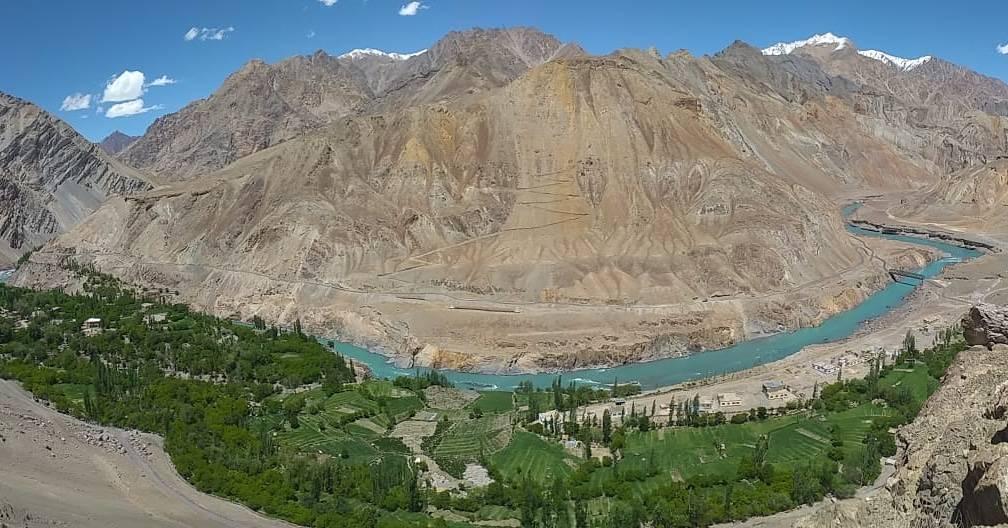
Takmachik’s Apricot Orchards and Agricultural Traditions
As you walk through Takmachik in the warmer months, the scent of apricot blossoms lingers in the air like a gentle promise. The village is known across Ladakh for its abundant apricot orchards, which line the narrow pathways and terrace fields with bursts of color each spring and early summer. But these trees are more than just beautiful—they are the lifeblood of the village’s sustainable economy and a symbol of its deep-rooted relationship with the land.
Apricot farming in Takmachik follows organic and traditional methods, passed down through generations. No chemicals touch the soil. Compost is made from livestock waste and decomposed kitchen scraps, and natural pest control techniques are used to preserve the health of the trees. During harvest season, villagers—young and old—gather to collect ripe apricots by hand. It’s a time of shared labor, laughter, and celebration, where every basket filled brings the community one step closer to self-sufficiency.
The apricots are not just eaten fresh. Many are sliced and sun-dried on rooftops, their golden hue deepening under the high-altitude sun. Others are turned into delicious apricot jam, oil, syrup, and even soap, all of which are sold to visitors and at local markets. These products are chemical-free, lovingly made, and packaged with recycled or biodegradable materials. Purchasing them isn’t just about taking home a souvenir—it’s about supporting an eco-friendly local economy.
Visitors who are curious about this process are warmly invited to learn. Many homestay families are happy to show you how the fruit is cleaned, cut, dried, or processed into jam. If your visit coincides with harvest season, you may even find yourself high on a ladder, reaching for the ripest apricots, or sitting under a tree with the family, sorting fruit and sipping salted butter tea.
Beyond apricots, Takmachik also cultivates barley, peas, spinach, and other vegetables using permaculture principles that work in harmony with Ladakh’s short growing season. The villagers understand the rhythm of their ecosystem—the timing of the snowmelt, the intensity of the summer sun, the cool breath of evening winds—and they farm accordingly. These practices have kept the soil rich and the community nourished for centuries.
In a world increasingly disconnected from food sources, Takmachik offers a rare chance to reconnect. To see how food is grown, gathered, and honored. To taste the sweetness of an apricot plucked straight from a branch. To understand that farming is not just work—it is ritual, culture, and identity. Here, every seed planted is an act of hope. Every harvest, a celebration of life in balance with the earth.
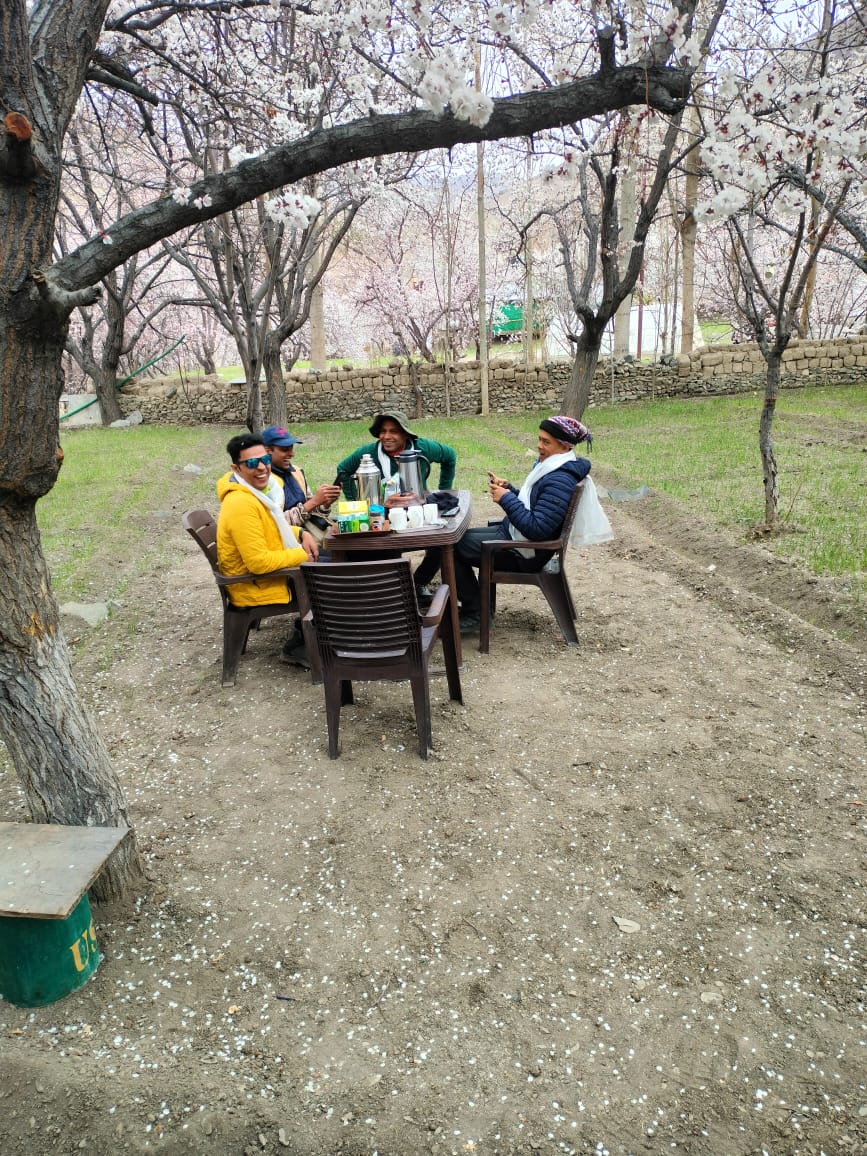
How to Reach Takmachik and Plan Your Trip
Reaching Takmachik may feel like stepping off the map—but that’s exactly what makes the journey special. The village is situated about 80 kilometers west of Leh, and while it doesn’t appear on most tourist itineraries, the route is accessible, rewarding, and rich in scenery. Planning your visit here means choosing the road less traveled—and finding the stories hidden along its bends.
From Leh, travelers typically follow the Srinagar-Leh Highway (NH1) for about 60 kilometers until reaching the village of Kharsi, a small junction town known for its market. From there, a narrower mountain road winds up toward Takmachik, passing through stark rock formations and gentle green valleys. It’s best to hire a local taxi or driver familiar with the region, as road conditions can change with weather and seasonal maintenance.
Depending on your pace and the number of photo stops you make—and trust us, you’ll want to stop often—the drive takes around three hours from Leh. Public transport options are limited, especially outside the peak summer season, so arranging private transport in advance is recommended. Some eco-tour operators or homestays in Takmachik can also assist with organizing pickup from Leh or nearby villages like Likir or Alchi.
When should you visit? The best time to travel to Takmachik is between late May and early October, when the roads are open and the weather is pleasant. April brings the first blush of apricot blossoms, July and August are ideal for cultural immersion and farming experiences, while September offers golden light, crisp air, and fewer crowds. Winter travel is possible but only for the intrepid, as temperatures drop sharply and accommodations become limited.
What to bring? Though homestays provide basic comforts, it’s best to pack with self-sufficiency in mind. Warm layers, a refillable water bottle, eco-friendly toiletries, sunscreen, and sturdy walking shoes are essentials. Wi-Fi is usually not available, and mobile reception is minimal—something many visitors find refreshing. Bring a good book, a notebook, or simply an open heart for long conversations with your hosts.
Nearby places to explore include the ancient monasteries of Alchi and Rizong, the hidden moonland-like formations of Lamayuru, or the pristine paths near Yangthang and Hemis Shukpachan. But many who come to Takmachik choose not to go anywhere else. There is a quiet magnetism here—a sense that once you arrive, the outside world fades, and you begin to experience time in a different way.
Traveling to Takmachik is not just about ticking off another destination. It is about the approach—slow, respectful, and curious. It is about being more than a visitor, and stepping into a rhythm that has sustained mountain life for generations. This journey may not come with a luxury checklist, but it offers something far rarer: the chance to rediscover simplicity, silence, and deep connection.
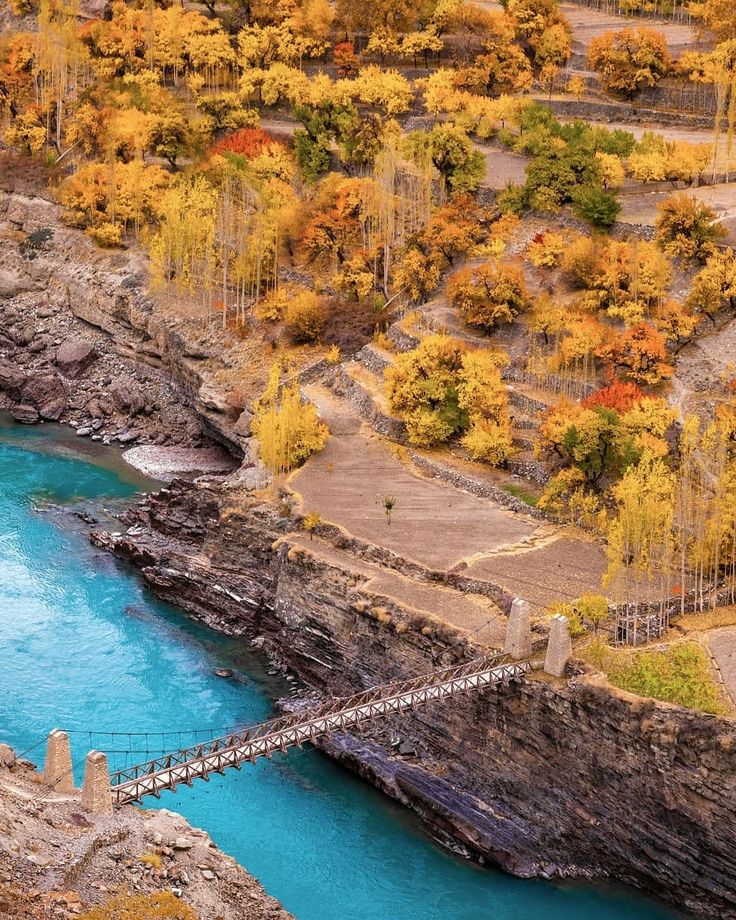
Responsible Travel Tips for Visiting Takmachik
Takmachik is not a destination for mass tourism. It is a place of quiet values, fragile ecosystems, and deep-rooted traditions. Traveling here means stepping gently—both in a physical and cultural sense. The beauty of eco-tourism is that it invites us to become conscious participants rather than passive observers. To help you make the most of your time while respecting the village and its people, here are some practical and heartfelt tips for traveling responsibly in Takmachik.
Support the local economy directly. Stay in registered homestays, eat local food, and purchase handmade products. Whether it’s a jar of sun-dried apricots, a handwoven woolen shawl, or natural apricot oil, every rupee spent in Takmachik helps keep traditional skills alive and families self-sufficient. Avoid bringing packaged snacks or imported goods—part of the joy of being here is tasting what the land offers.
Pack sustainably. Bring a refillable water bottle (filtered water is usually available), cloth shopping bags, and biodegradable toiletries. Avoid single-use plastics, especially plastic bottles, which are difficult to dispose of in remote regions. Leave behind chemical-heavy sunscreen and mosquito repellent—natural alternatives work well in this climate and are gentler on the environment.
Respect cultural norms and rhythms. Dress modestly, especially when walking through the village or visiting the local gonpa (Buddhist temple). Ask before taking photographs of people, especially elders. If you’re invited into a home, remove your shoes at the entrance and be open to sharing meals and conversations in the kitchen—the heart of Ladakhi hospitality.
Minimize waste and leave no trace. Bring back everything you carry in. Even biodegradable waste like fruit peels or paper can disrupt the village’s delicate waste management systems. Use composting toilets if available, and avoid flushing non-biodegradable items. The villagers take great care of their land—let your presence reflect the same.
Travel slow, stay longer. One of the most impactful ways to travel responsibly is simply to spend more time in one place. Instead of rushing from village to village, allow Takmachik to reveal itself slowly. The longer you stay, the deeper your relationships, your understanding, and your appreciation will grow. You will move from being a stranger to becoming part of a shared story.
Listen and learn. The villagers of Takmachik are not just hosts—they are stewards of an ancient way of life. Their knowledge of climate, agriculture, spirituality, and survival in high-altitude conditions is profound. Be curious. Ask questions. Share your own stories, but come prepared to listen. This is where true exchange happens.
In choosing Takmachik, you’re choosing a path of meaningful connection and environmental stewardship. Responsible travel here isn’t just about rules—it’s about intention. About aligning your journey with the values of the land and its people. And when you leave, you’ll carry more than memories—you’ll carry a deeper awareness of what it means to travel with heart, humility, and care.

Voices from the Village: Stories and Testimonials
Travelers who journey to Takmachik often find that what stays with them long after they leave is not just the landscape, but the people—the quiet strength of the farmers, the warmth of homestay hosts, the laughter of children weaving flower garlands in the apricot groves. In this section, we share a few of the many voices—both from those who call Takmachik home and from visitors whose lives have been deeply touched by the experience.
“I came for two days and stayed for eight.”
That’s how Anna, a solo traveler from Austria, began her story. “I had read about Takmachik being Ladakh’s first organic village, but I didn’t expect to feel so at home. I helped a family dry apricots, learned how to cook momos from scratch, and even participated in a village clean-up. It wasn’t just a trip—it was a life lesson in sustainability and simplicity.”
Tashi, a young farmer and member of the Takmachik Youth Group, sees tourism as a bridge. “Before, people thought you had to go to cities to find opportunity. Now we are showing that it’s possible to create a future right here, without giving up our traditions. When guests come, we’re not just showing them our village—we’re showing them a different way to live.”
Maria and Paolo, a couple from Italy, say their time in Takmachik was the most peaceful part of their Ladakh journey. “Each evening we would sit on the rooftop with our host family, drinking butter tea and watching the sun set behind the mountains. The silence, the stars, the stories—it felt like time had slowed down. We arrived as guests and left feeling like family.”
For Sonam Dolma, a mother of three and homestay owner, tourism has brought dignity and independence. “I never imagined that guests from faraway countries would come and live in my home. But they do. And I see the pride in my children’s eyes when I cook for our guests, when I explain our village to them. It is not just about money—it is about connection.”
Every traveler adds something to Takmachik, and every traveler takes something away—though not in the usual sense. They leave lighter, clearer, more grounded. And many of them stay in touch with their host families for years after their visit. Some even return with friends or family, not to ‘see’ the village again, but to be part of it once more.
These stories are not curated or scripted. They are real. And they are the heartbeat of Takmachik’s eco-tourism movement. In a world driven by speed and spectacle, they remind us that there is another way to travel—one rooted in slowness, sincerity, and shared humanity. And in Takmachik, that way is alive and well.
Why Takmachik Is Ladakh’s Eco-Tourism Blueprint
In the vast expanse of Ladakh, where dramatic landscapes and ancient monasteries draw travelers from around the world, Takmachik quietly offers something far more radical: a sustainable future rooted in tradition. It is not a place of luxury or spectacle—it is a model, a living blueprint for what eco-tourism can look like when built from the ground up, with the land and its people at the center.
Many villages across the Indian Himalayas have been impacted by the double-edged sword of tourism—growing footfall brings income but often disrupts community rhythms and places strain on fragile ecosystems. Takmachik chose a different route. Instead of waiting for outside solutions, the community took initiative. They formed local committees, developed their own tourism code of conduct, and educated residents and visitors alike on how to live lightly in a high-altitude environment.
What makes this approach exceptional is that it is deeply inclusive. Women run homestays. Youth lead clean-up campaigns. Elders guide agricultural practices. Every voice matters in the decision-making process. Takmachik’s success doesn’t lie in a five-star rating or glossy brochures—it lies in its collective spirit, its humility, and its unwavering commitment to environmental harmony.
The village has become a case study for responsible tourism across the Himalayas. NGOs, travel professionals, and even other village leaders have come to Takmachik to learn how organic farming, community tourism, and local governance can align. And it’s not just about eco-practices—it’s about pride. Pride in local identity. In Ladakhi language, food, rituals, and landscapes that are not just preserved for tourists, but for the generations yet to come.
There’s a growing sense in the world today that something must change—that travel should no longer be extractive, but restorative. Takmachik has already taken that step. It reminds us that tourism doesn’t have to come at the cost of culture or ecology. In fact, it can be a tool for strengthening both—if done with intention.
In Takmachik, you see that future in action. A future where authenticity is more valuable than convenience, where nature is not a backdrop but a partner, and where travelers leave not with souvenirs, but with stories, friendships, and a deeper sense of what it means to belong somewhere—even if just for a little while.
So when you plan your journey to Ladakh, let Takmachik be more than a dot on your map. Let it be your anchor. Your pause. Your reminder that travel done right can nourish not only the soul but also the soil, the people, and the future we all share.
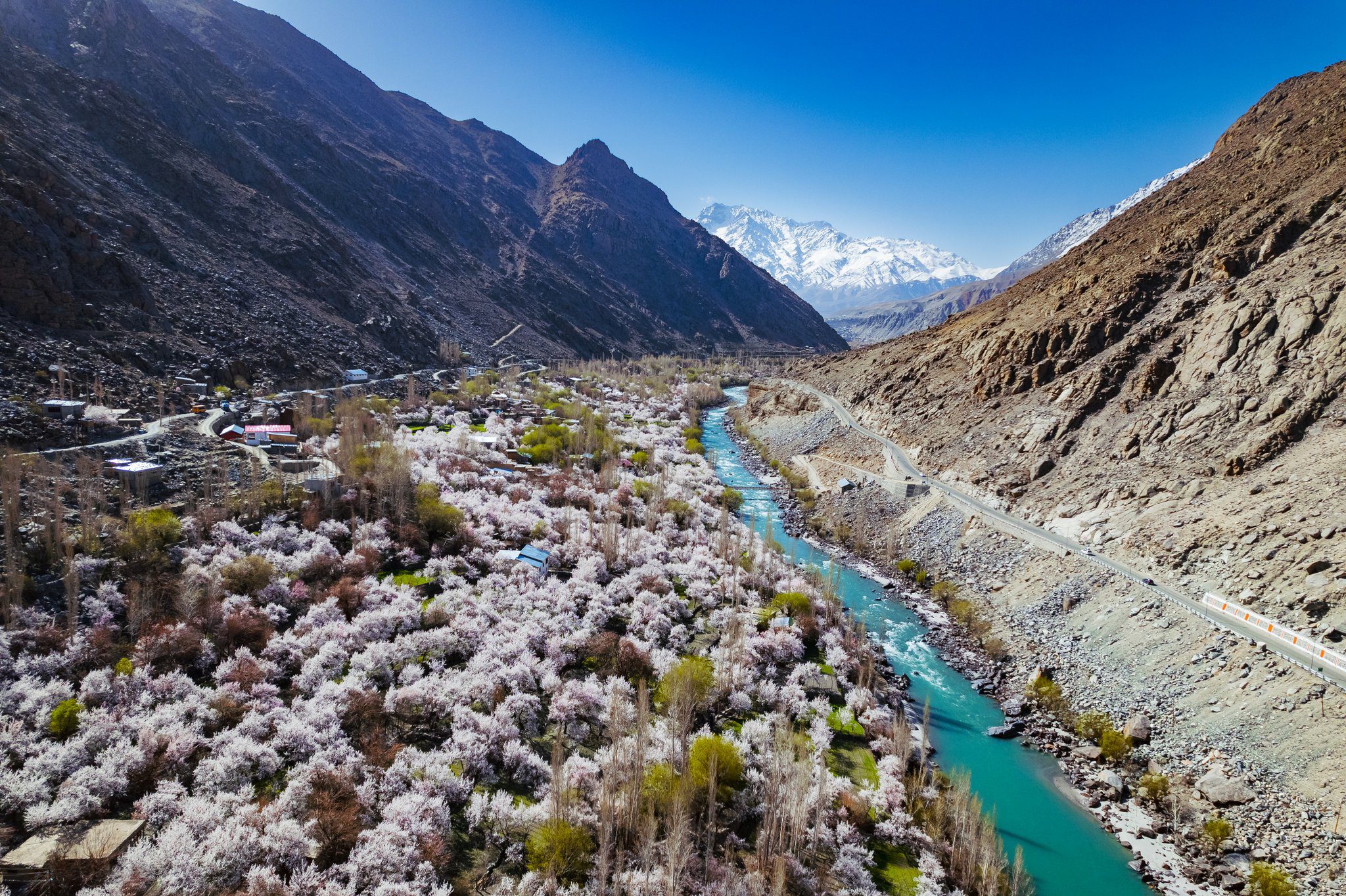
Conclusion: Embrace Organic Living in Ladakh’s Heartland
There are places you visit and there are places that visit you. Takmachik is the latter. Long after the trip is over and your boots are packed away, its presence lingers—in the way you think about food, about silence, about sustainability and simplicity. It is a village, yes. But more than that, it is a living classroom, a mirror, a philosophy in motion.
In Takmachik, you are not a spectator. You walk with the farmers. You rise with the sun. You carry buckets of glacier melt to water vegetables that were planted with prayers. You peel apricots. You sweep courtyards. You listen to stories over herbal tea as the sky folds into twilight. This is travel in its truest sense—not to consume, but to connect.
The world is changing, and with it, the way we move through it must change too. Takmachik offers a gentle yet powerful reminder that progress does not have to mean destruction, and that tradition can be a compass guiding us toward a more balanced future. It invites you to slow down. To pay attention. To give back as much as you receive.
So whether you’re a seasoned trekker, an environmentalist, a cultural explorer, or simply someone in search of peace, let Takmachik welcome you into its embrace. Come with open eyes and an open heart. Share a meal, plant a seed, leave only footprints. And take with you something far greater than photographs—a renewed understanding of how to live lightly, lovingly, and locally.
This is not just a destination. It is a reminder that the most important journeys are the ones that change how we see the world—and how we choose to walk through it. In Takmachik, you won’t just find a village. You’ll find a way forward.


